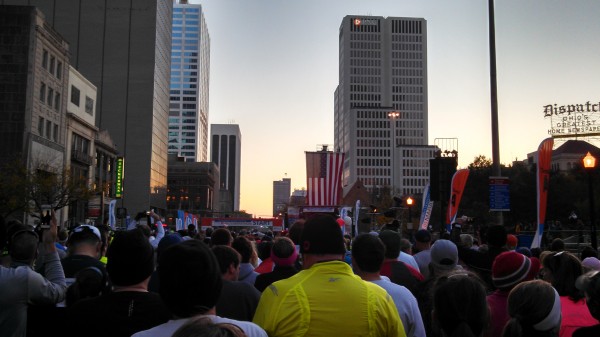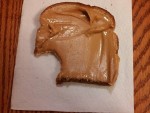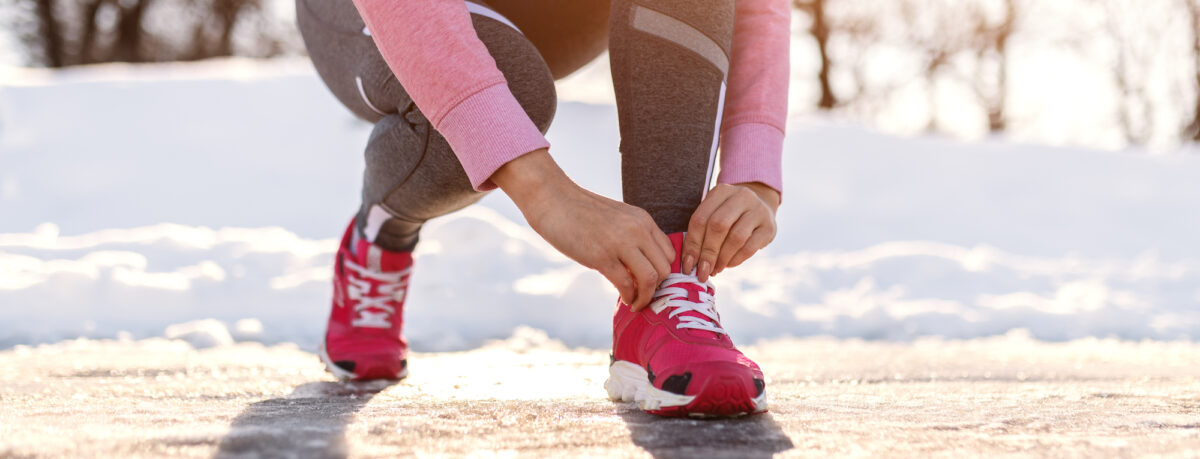Final Preparations for Your First Marathon or Half Marathon

Spring is a great time to do a marathon or half marathon. And this last weekend in April is a big one for races: Big Sur International, Oklahoma City, St. Jude Country Music…
If you are doing your first long-distance race, I’m assuming you completed your training, you’ve been tapering this past week, and you know what you are going to wear. But what should you do the night before and the morning of the race?
Based on an article by Bonnie Stein that appeared in the Summer 2006 issue of WALK! Magazine, the following are things to do to get ready for your first long race. [My additions are in brackets.]
The Night Before the Race
1. Eat a healthy, low-fat, moderate-protein dinner. Carbohydrates are easy to digest. [Do not eat foods that are unfamiliar.] Hydrate all week.
2. Plan what you are going to wear. Do not wear anything new during the race. Shoes, socks, sports bra, shorts… everything should be worn during training to make sure there are no friction spots. [Do not wear your race shirt. Gather everything in one spot so it is easy to find in the morning.]

3. Pin your race number to the FRONT of your shirt. Use all four pins to keep it from flapping in the wind.
4. Try to get a good night’s sleep, though it is more important to sleep well two nights before the race. [Nerves may prevent you from sleeping.]
The Morning of the Race
5. Pack dry clothes to put on after the race. [Keep them in your car or a gear check bag to take to the start of the race.]
6. If chafing is a problem, use Body Glide, or another lubing product. [Make sure you use lube during practice walks to be sure it will work.]
 7. Eat at least 2 hours before the race — something high in complex carbohydrates, moderate protein, minimal fat. Good choices include bagels, bananas, and toast with peanut butter. Eat what you usually eat before your long slow training days. Whether you drink coffee on race morning will depend on whether you typically drink coffee on training days. Be sure to drink water before you leave for the race.
7. Eat at least 2 hours before the race — something high in complex carbohydrates, moderate protein, minimal fat. Good choices include bagels, bananas, and toast with peanut butter. Eat what you usually eat before your long slow training days. Whether you drink coffee on race morning will depend on whether you typically drink coffee on training days. Be sure to drink water before you leave for the race.
Before the Race
8. Arrive at the race early. One hour early is typically recommended. [Large races may require an earlier arrival time to allow for traffic and parking.] Make sure you have plenty of time to use the port-o-johns and get to your corral.
9. [If you plan to use gear check, allow time to drop off your bag. Because of the Boston bombing, many races now have strict rules on the types of bags allowed.]
10. Warm up by walking at least half a mile. The shorter the race or faster the pace, the longer you should warm up.
11. Line up at the starting line by predicted finish time. [Line up behind faster athletes. Most races are chip timed — the clock does not start for you until you cross the starting line. Many large races have pacers. Consider lining up with a pace group.]
Don’t start out too fast — walk at the pace you trained for. Drink water when you are thirsty. Have a good race!
After you finish, be sure to let me know how it went! Post a comment on this blog, or leave a comment on the Walk! Facebook page.
(9865)
